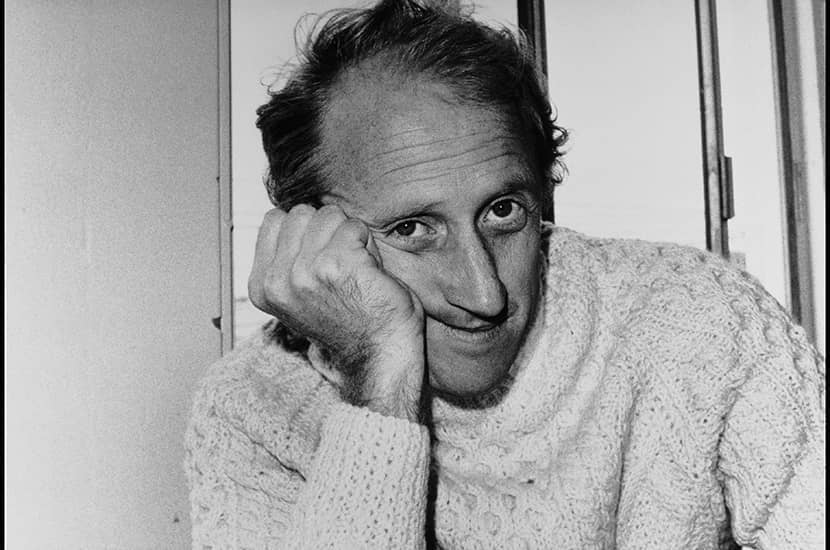In his 2005 book What The Dormouse Said John Markoff traced the roots of the personal computer industry to the counterculture of the 1960s – a tale that owed as much to Jefferson Airplane as Jeffersonian ingenuity. Constantly popping up in that narrative is the adopted Californian Stewart Brand. Markoff wrote of his ‘Zelig-like penchant’ for being present at turning points in the story. Whole Earth, viewed one way, is an extended apology for that epithet. ‘The Zelig reference,’ Markoff says now, ‘is the wrong way to describe him, for there has been a consistent through line that has connected his various campaigns, crusades and inquiries over more than six decades.’
It is the wrong way to describe him also because Brand is an actor, not a bystander. It is hard to define precisely what he does: essentially, he has been an ambassador between California’s tech culture and its counterculture, sometimes as a journalist, sometimes as a photographer, sometimes as a publisher, sometimes as an artist or an author or a plain provocateur – endlessly bringing people together but also endlessly moving on.
After an acid trip gave him a flash of insight about the fragility of the planet, he distributed badges asking ‘Why Haven’t We Seen a Photo of the Whole Earth Yet?’ He ran the Trips Festival, at which San Francisco’s 10,000 hippies realised there were 10,000 other hippies, kickstarting the Summer of Love. He founded and ran the massively successful Whole Earth Catalog, credited as an inspiration by Steve Jobs. He continued its spirit through two magazines. He helped demo the dawn of personal computing; founded a pioneering online network; told the world that ‘information wants to be free’ – though his corollary, that ‘information wants to be expensive’, is less often remembered. (A facility with aphorism is an underrated strength.)
His book How Buildings Learn attracted the wrath, and the lawyers, of Richard Rogers by suggesting his buildings needed excessive maintenance. (‘Lord Asshole,’ Brand called him 15 years later, still smarting.) Whole Earth Discipline, full of technological fixes for the climate crisis, made new enemies out of old friends. Now in his eighties, Brand is heavily involved as a founder of the Clock of the Long Now, promoting long-term thinking, much as the photos of the whole Earth promoted global thinking, and trying to revive endangered and extinct species.
Markoff’s biography moves swiftly through all these campaigns and more, drawing on interviews (including with his family, who sometimes show steely Brand disloyalty) and his own contemporaneous journals. When I interviewed Brand a decade ago, the biographer had just started excavating. Brand told me: ‘John Markoff from the New York Times says “I’ve been looking through your notebooks”. And I start to die. And he says “You’ve a lot of trouble with women, haven’t you?”’ Indeed he had. Much of the first half of the book is taken up with its hero falling for women who do not love him back and failing women who do love him back. The work often takes second place to the life.
Running through the narrative are themes that explain Brand’s success as an intellectual entrepreneur. First, his conservative Midwestern background, followed by prep school at Philips Exeter Academy, whose Harkness system encouraged self-directed learning and positively rewarded disputatiousness. At Stanford he trained as a biologist; he then spent two years in the army, frustrated by its bureaucracy but also admiring its ability in a pinch to make things happen. All this – plus a judicious sprinkling of family wealth – helped him stand out.
Second, his ability (matched perhaps only by Douglas Adams) to throw away more good ideas than most people ever have. One of the most entertaining threads of the biography is the notions and projects that never get off the ground. He is convinced he wants to live off-grid and homestead, until he tries it. Entranced by Venice, he wants to write a ‘systems history’ of the city; this then morphs into a trilogy of novels in which, with an inescapable premonitory whiff of Dan Brown, a physicist living in modern-day Venice solves mysteries. None of these is ever written. He proposes interviewing billionaire friends for a book called How to Be Rich Well; no publisher wants it. A software magazine is both ahead of and behind its time, and fails. The route to good ideas leads through countless bad ones.
Third, he knows when to walk away. He leaves projects just when they are becoming successful (like the Whole Earth Catalog, whose supposedly final iteration won a National Book Award) and he changes his mind frequently: a mantra is ‘strong opinions loosely held’. He has reversed his stances on everything from communes to cocaine. He changed his mind on nuclear power (anti to pro). He changed his mind on libertarianism (pro to anti), though he can still be conservative: his friendship with Brian Eno is good for him partly because ‘Brian is left with a capital L’.
Sometimes the contrarianism is infuriating. In How Buildings Learn, Brand praises wooden window fittings because they show water damage early, allowing it to be corrected. Visiting his Petaluma retreat, I was taken aback to find all its frames shinily acrylic. ‘Plastic is much less trouble,’ he shrugged. ‘I was wrong.’ This was, at least, on-brand.






Comments